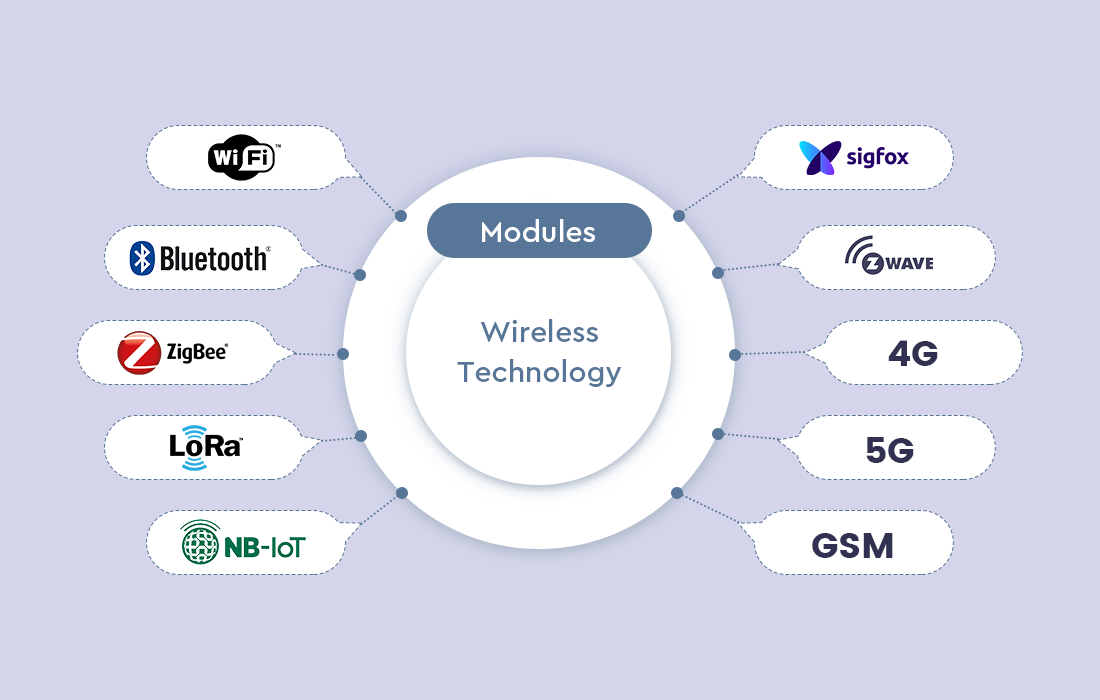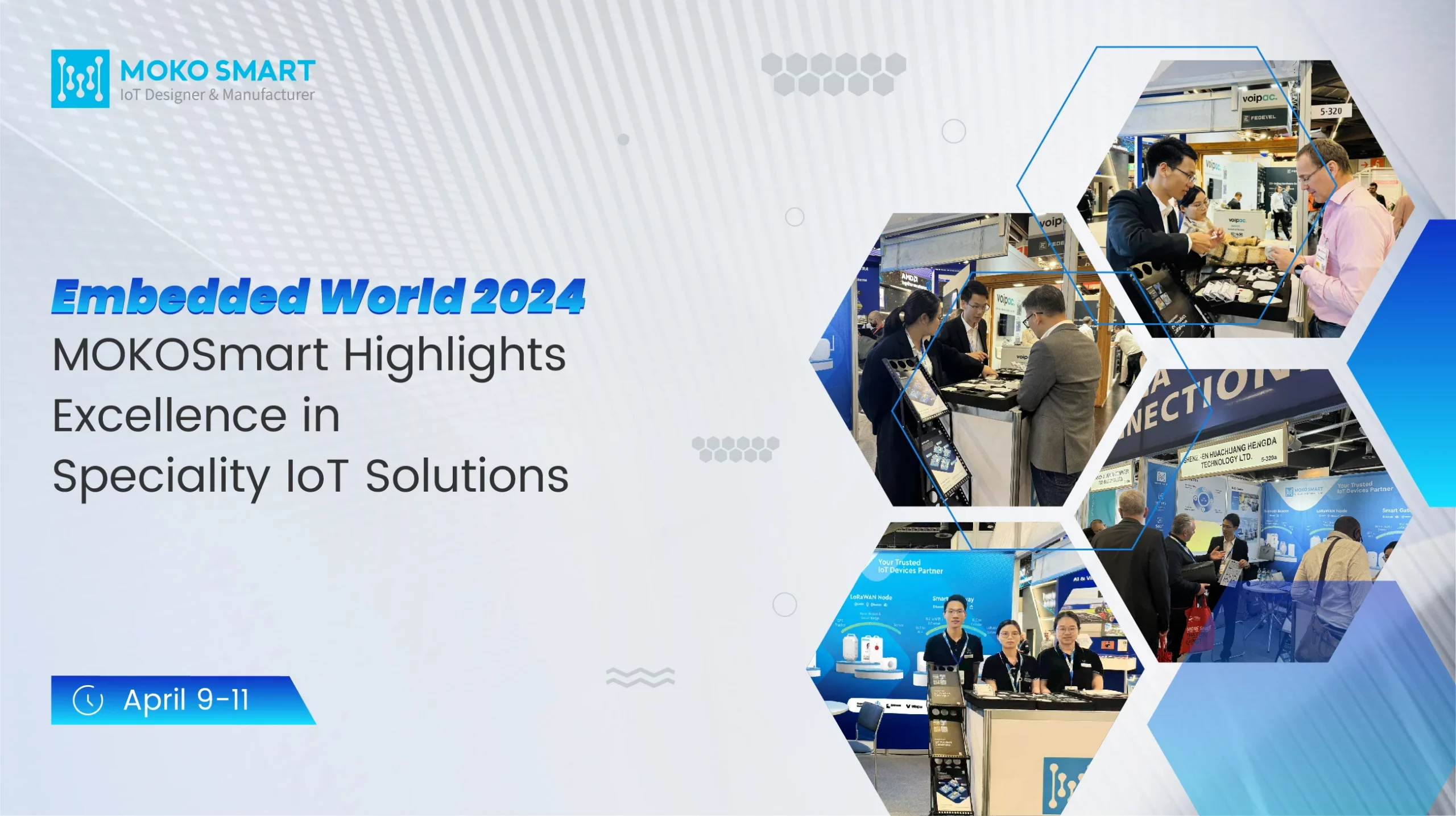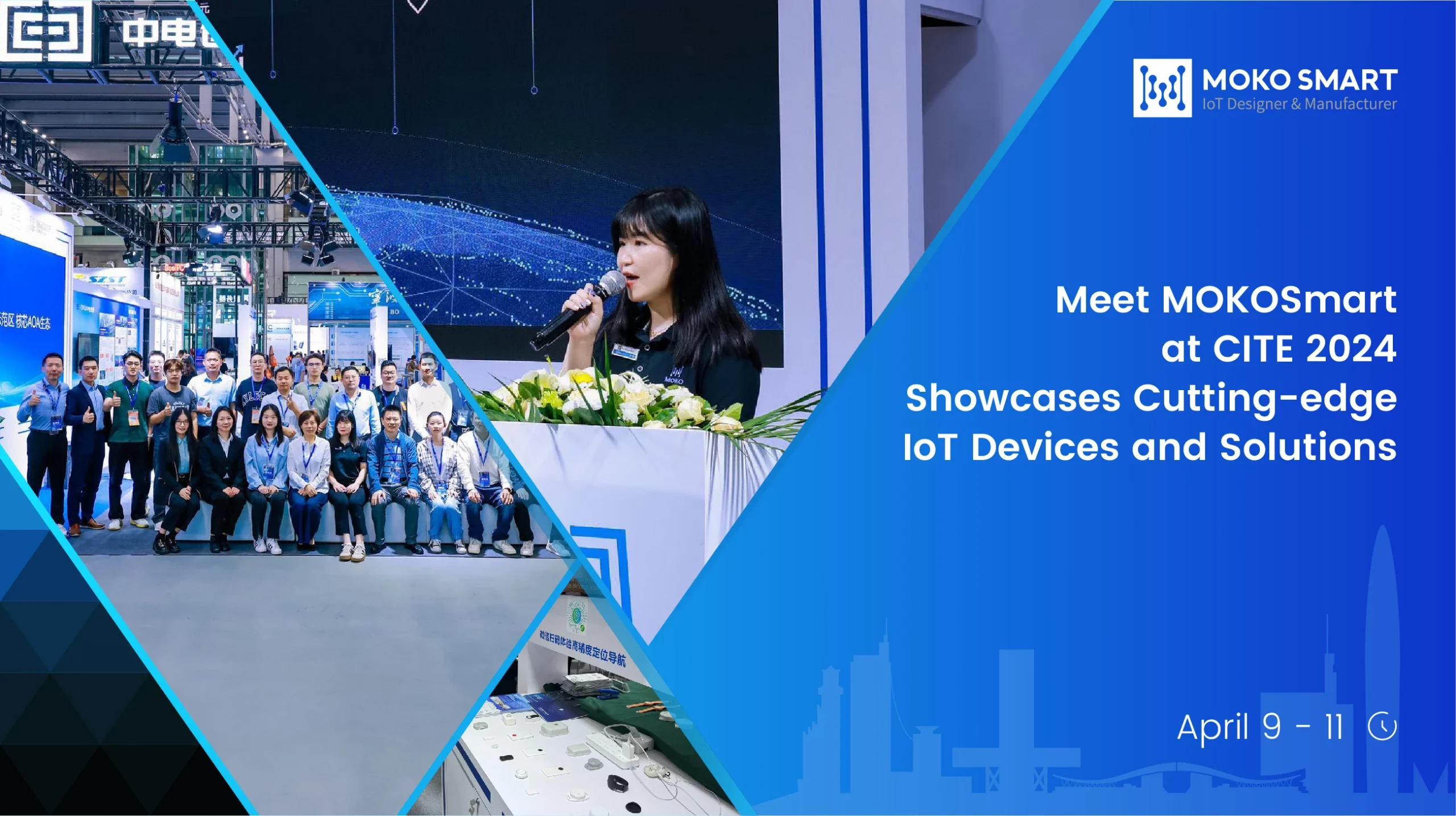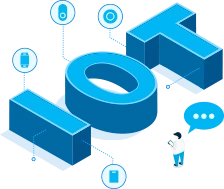모든 장치가, 스마트 홈에서 자동차로, 완벽하게 연결되어 있습니다, 일상을 풍요롭게 하는 정보 교환. 이것이 바로 사물인터넷의 핵심이다, 산업이 번성하는 영역, 효율성이 치솟는다, 혁신에는 한계가 없습니다. 이 디지털 혁명의 중심에는, IoT 장치의 연결성과 기능을 촉진하는 데 중요한 역할을 하는 스마트 모듈을 찾습니다.. IoT 패브릭을 연결하는 보이지 않는 스레드 역할을 합니다., 업계가 프로세스를 최적화할 수 있도록 지원, 의사 결정 개선, 우리가 살고 일하는 방식을 재정의할 것입니다.. 이 기사에서, IoT 모듈을 탐구합니다, 그들의 정의, 그리고 다양한 종류가 가능해요. 또한, 우리는 그들의 사용 사례를 탐구합니다, IoT 모듈 선택 유형에 대한 주요 고려 사항, IoT 모듈의 발전에 대해 논의합니다..
무엇’IoT 모듈입니다?
IoT 모듈은 필요한 하드웨어를 통합한 소형 전자 부품입니다., 펌웨어, IoT 장치에서 무선 연결 및 통신을 가능하게 하는 소프트웨어 기능. Wi-Fi 등의 기술이 통합되어 있습니다., 블루투스, 지그비, 또는 셀룰러 (LTE, 5지) 네트워크를 통해 데이터를 전송하고 수신하기 위해. 사무용 겉옷, IoT 모듈은 IoT 장치에 대한 연결 백본을 제공합니다., 원활한 데이터 교환 및 혁신적인 애플리케이션 지원.
8 종류 모듈 디차별적인 여분노하지 않는 티기술
IoT 영역은 빠르게 발전하고 있습니다., 기술이 전 세계적으로 빠르게 발전하면서. 프로젝트 성공의 열쇠는 다양한 무선 통신 기술의 핵심 원리를 파악하는 것입니다..
와이파이 미디엄국가
WiFi 모듈, WLAN 모듈이라고도 함, 무선 인터넷 연결을 위해 수많은 제품에 사용되는 전자 부품입니다.. 이 무선랜 기술은 IEEE802.11 표준을 사용하여 설계되었습니다.. 유선 네트워크 신호를 전파 신호로 변환하는 기술입니다., 무선 통신 모듈을 사용하여 다른 장치가 WiFi를 통해 무선으로 인터넷에 연결할 수 있도록 합니다..
블루투스 모듈
ㅏ 블루투스 모듈 Bluetooth 기능을 통합한 칩이 포함된 기본 회로 세트입니다.. 근거리 2.4G 무선통신 모듈 역할을 합니다.. 최종 사용자는 Bluetooth 모듈을 부분적으로 완성된 제품으로 간주합니다.. 모듈을 기반으로 쉘의 기능을 재개발하고 캡슐화함으로써, 블루투스 통신이 가능한 제품이 드디어 구현됐다..
지그비 모듈
Zigbee 모듈은 Zigbee 프로토콜을 사용하는 장치 간의 무선 통신을 용이하게 하도록 설계된 하드웨어 구성 요소입니다.. Zigbee는 IoT 애플리케이션용으로 특별히 개발된 저전력 무선 프로토콜입니다.. 메시 네트워크 토폴로지를 사용합니다., 장치가 서로 직접 통신하거나 라우터나 코디네이터로 알려진 중간 노드를 통해 통신할 수 있도록 지원.
LoRa 모듈
ㅏ LoRa 모듈 LoRaWAN 프로토콜을 사용하여 무선 연결을 제공하도록 설계된 장치입니다.. 성공적인 LoRa IoT 솔루션을 만드는 데 중요한 요소 역할을 합니다.. 다양한 산업 분야에서 LoRa 기술이 널리 채택되면서 LoRa 모듈에 대한 수요가 증가하고 있습니다..
NB-IoT 미디엄국가
NB-IoT 모듈은 IoT 애플리케이션을 위해 특별히 설계된 무선 통신 모듈입니다.. 제3차 3GPP에서 표준화한 LPWAN 기술을 활용하고 하드웨어를 통합한다., 펌웨어, IoT 장치를 셀룰러 네트워크에 연결하고 데이터를 전송하는 소프트웨어 구성 요소.
시그폭스 모듈
Sigfox 모듈을 사용하면 장치를 Sigfox 네트워크에 연결하고 데이터를 전송할 수 있습니다.. 원격을 제공합니다, IoT 장치가 최소한의 에너지를 소비하면서 장거리에 걸쳐 소량의 데이터를 전송할 수 있도록 하는 저전력 통신 기능.
지-웨이브 모듈
Z-Wave 모듈은 스마트 홈을 위해 특별히 설계된 무선 통신 모듈입니다.. Z-Wave 무선 프로토콜을 활용합니다., GHz 미만 대역에서 작동하는, 홈 네트워크 내 스마트 기기 간 원활한 통신을 가능하게 합니다..
셀룰러 모듈은 다양한 기술을 포괄합니다., GSM/GPRS 포함, 5지, 및 4G 모듈. 이 모듈은 셀룰러 네트워크를 사용하여 무선 연결을 활성화하도록 설계되었습니다..
4G 모듈
4G 모듈, LTE 모듈이라고도 함, IoT 애플리케이션을 위한 고속 셀룰러 연결 제공. 안정적이고 안정적인 데이터 전송을 제공합니다., 광범위한 IoT 사용 사례에 적합하게 만듭니다., 차량 관리를 포함한, 건강 관리 모니터링, 그리고 스마트미터링.
5G 모듈
5G 모듈은 차세대 셀룰러 모듈입니다., 5G 네트워크를 위해 특별히 설계되었습니다.. 5G 기술은 초고속 데이터 속도를 제공합니다., 짧은 대기 시간, 대규모 장치 연결성, 실시간 통신 및 고대역폭 기능이 필요한 고급 IoT 애플리케이션 지원.
GSM/GPRS 모듈
GSM 모듈은 셀룰러 네트워크를 활용하여 IoT 장치에 대한 전 세계 연결을 제공합니다.. 셀룰러 네트워크를 통한 음성 및 데이터 전송이 가능합니다., 이동성과 광범위한 네트워크 범위가 필수적인 애플리케이션에 적합합니다..
ㅏ 디자세한 씨비교 티할 수 있는 티종류 나는영형티 미디엄난자
| 아이오티엠오둘 | 아르 자형앙쥬 | 티전송률 | 피OWER 소비 | 씨OST | ㅏ신청 |
|---|---|---|---|---|---|
| Wi-Fi 모듈 | 지역 | 높은 | 보통의 | 낮은 | 인터넷에 연결된 장치, 스마트 홈 오토메이션 |
| 블루투스 모듈 | 단거리 | 보통의 | 낮은 | 낮은 | 개인 기기, 스마트 홈 기기 |
| 지그비 모듈 | 단거리 | 낮은 | 낮은 | 낮은 | 스마트 홈 오토메이션, 산업 제어 시스템 |
| LoRa 모듈 | 장거리 | 낮은 | 낮은 | 보통의 | 스마트 시티, 농업, 자산 추적 |
| NB-IoT 모듈 | 광범위 | 낮은 | 낮은 | 높은 | 스마트 측광, 농업, 원격 모니터링 |
| 시그폭스 모듈 | 장거리 | 낮은 | 낮은 | 높은 | 자산 추적, 환경 모니터링 |
| Z-Wave 모듈 | 단거리 | 보통의 | 낮은 | 높은 | 스마트 홈 오토메이션 |
| 4G 모듈 | 광범위 | 높은 | 보통에서 높음 | 보통의 | 비디오 감시, 텔레매틱스, 공업 자동화 |
| 5G 모듈 | 광범위 | 매우 높음 | 보통에서 높음 | 높은 | 증강 현실, 자율주행차, 스마트 시티 |
| GSM 모듈 | 글로벌 | 보통에서 높음 | 보통의 | 높은 | 추적 장치, 원격 모니터링 시스템 |
비교하다 에스단거리 IoT 모듈: 블루투스 대 여나는-에프나는 대 지그비 대 Z 파
IoT 모듈 범위
Wi-Fi 모듈은 범위가 가장 깁니다., 수백 피트에서 수백 미터까지의 범위를 제공합니다., ZigBee보다 더 먼 거리를 커버, Z 파, 및 블루투스 모듈. ZigBee 및 Z-Wave는 홈 자동화용으로 설계되었으며 최대 범위를 갖습니다. 30 미터, Bluetooth의 범위는 최대 10 미터, 하지만 Bluetooth와 같은 최신 버전은 5.0 최대 범위를 확장할 수 있습니다. 100 미터.
IoT 모듈의 데이터 전송 속도
블루투스 5.0 전송 프로토콜은 스마트 홈 및 웨어러블 장치와 같은 영역에서 WiFi 모듈보다 여전히 앞서 있습니다., 하지만 WiFi 모듈은 또한 매우 빠른 무선 전송 속도와 넓은 적용 범위를 가지고 있습니다.. Wi-Fi 모듈의 최고 속도는 초당 수 기가비트입니다., 이는 빅 데이터 전송에 이상적입니다.. ZigBee 및 Z-Wave는 저데이터 애플리케이션용으로 설계되었으며 Wi-Fi에 비해 데이터 전송 속도가 낮습니다..
IoT 모듈의 전력 소비
ZigBee와 Z-Wave 모두 저전력 소비를 우선시하도록 설계되었습니다., 스마트 센서 및 스마트 온도 조절기와 같은 배터리 구동 장치에 적합합니다.. Bluetooth 모듈에는 저전력 모드도 있습니다., 하지만 높은 데이터 전송 모드에서는 더 많은 전력을 소비합니다.. Wi-Fi 모듈은 데이터 전송 속도가 높기 때문에 이러한 기술보다 더 많은 전력을 필요로 합니다..
비용 IoT 모듈
이 4개의 모듈 중에서, 블루투스 모듈이 가장 저렴합니다., Z-Wave 모듈은 가장 비쌉니다.. Wi-Fi와 Zigbee 모듈은 그 사이에 위치합니다., Wi-Fi는 Zigbee 모듈보다 약간 저렴합니다..
적용 IoT 모듈
블루투스는 일반적으로 단거리 통신 목적으로 사용됩니다., 스마트폰, 태블릿과 같은 장치 간의 무선 연결을 촉진합니다.. Wi-Fi는 고속으로 데이터를 전송하는 데 사용되며 네트워킹 목적 및 IoT 애플리케이션을 위해 주거 및 사무실 환경에서 일반적으로 사용됩니다.. ZigBee 및 Z-Wave, 반면에, 홈 오토메이션을 위해 특별히 개발되었습니다., 조명 제어와 같은 장치에서 애플리케이션 찾기, 및 무선 센서 네트워크.
장거리 비교 IoT 모듈: LoRa 대 Sigfox 대 NB-IoT 대 4지 대 5지 대 GSM
IoT 모듈 범위
일반적으로, Sigfox 모듈은 현지 운영자와 협력하고 네트워크 인프라를 배포하여 글로벌 서비스 범위를 제공하도록 설계되었습니다.. LoRa 모듈은 일반적으로 다음과 같은 범위를 갖습니다. 5-15 km. 네트워크 인프라에 따라, 4G 모듈은 몇 킬로미터에서 수십 킬로미터에 이르는 범위를 제공합니다.. 5G 모듈과 NB-IoT 모듈 간의 연결 범위는 상대적으로 짧습니다., 일반적으로 수백 미터에서 몇 킬로미터까지.
데이터 전송률 IoT 모듈의
5G 모듈은 매우 높은 데이터 속도를 지원합니다. (최대 수Gbps), 미션 크리티컬 IoT 애플리케이션과 실시간 데이터 처리가 필요한 애플리케이션에 이상적입니다.. LoRa 모듈은 최대 데이터 속도를 지원합니다. 50 kbps이며 데이터 전송 요구 사항이 낮거나 중간인 애플리케이션에 적합합니다.. NB-IoT 모듈은 낮음에서 중간 정도의 데이터 속도도 지원합니다., 일반적으로 수십 Kbps에서 수백 Kbps에 이릅니다.. Sigfox는 데이터 속도가 더 낮습니다. (까지 100 bps) 최소한의 데이터 전송이 필요한 애플리케이션에 가장 적합합니다.. 4G 모듈은 LoRa에 비해 더 높은 데이터 속도를 제공합니다., NB-IoT, 그리고 시그폭스. 몇 Mbps에서 수십 Mbps까지 모든 것을 지원할 수 있습니다..
IoT 모듈의 전력 소비
5G 모듈은 다른 4개 모듈에 비해 전력을 가장 많이 소모합니다., 주로 더 높은 데이터 속도와 관련된 고급 기술 때문입니다.. 4G 모듈은 일반적으로 더 높은 데이터 속도와 더 복잡한 네트워크 프로토콜로 인해 나머지 3개 모듈보다 더 많은 전력을 소비합니다.. 로라, NB-IoT, 및 Sigfox는 저전력 작동을 위해 특별히 설계되었습니다., 몇 년 동안 지속되어야 하는 배터리 구동 장치에 매우 적합합니다..
IoT 모듈 비용
LoRa 모듈은 복잡성이 낮고 데이터 전송률이 낮은 원격 통신에 중점을 두기 때문에 일반적으로 4G 및 5G 모듈보다 비용이 저렴합니다.. Sigfox 및 NB-IoT 모듈의 비용은 다양할 수 있습니다., 그러나 단순성과 낮은 전력 요구 사항에 중점을 두기 때문에 상대적으로 저렴한 경향이 있습니다.. 4G 모듈에는 일반적으로 고급 기술과 인프라가 포함됩니다., LoRa 및 Sigfox 모듈에 비해 비용이 높아질 수 있음. 5G 모듈은 최신 세대의 셀룰러 네트워크 기술을 나타냅니다., 초고속 속도 제공, 짧은 대기 시간, 그리고 다수의 장치 연결, 결과적으로 다른 옵션보다 제조 비용이 더 많이 듭니다..
IoT 모듈 적용
LoRa 모듈은 장거리 통신과 낮은 전력 소비가 필요한 시나리오에 매우 적합합니다., 스마트 시티 솔루션과 같은 애플리케이션에 이상적입니다.. Sigfox 모듈, 반면에, 낮은 데이터 속도를 우선시하는 애플리케이션에 적합합니다., 배터리 수명 연장, 전세계 네트워크 범위, 환경 모니터링과 같은 응용 분야에 널리 사용됩니다.. NB-IoT 모듈을 사용하면 원격 연결이 가능합니다., 효율적이고 지속 가능한 통신이 필요한 원격 모니터링과 같은 애플리케이션에 매우 적합합니다.. 4G 모듈은 고속 인터넷 연결에 광범위하게 활용됩니다., 이동통신, 대량의 데이터 전송과 관련된 애플리케이션. 5G 모듈은 주로 초고속 속도가 필요한 애플리케이션을 대상으로 합니다., 짧은 대기 시간, 및 대규모 장치 연결성, 자율주행차와 같은. GSM 모듈을 사용하면 GSM 네트워크를 통한 통신이 가능합니다., 텔레매틱스 및 보안 시스템에 널리 사용됩니다..
블루투스 대. 와이파이 대. 로라봉고차 대. 지그비 대. GSM 대. NB-IoT 대. 지-웨이브 대. 에스igfox 대. 5G 대. 4지: 어떤 IoT 모듈이 더 낫습니까?
결정 “더 나은” IoT 모듈은 IoT 애플리케이션의 특정 요구 사항에 따라 달라집니다.. 각 모듈에는 다양한 사용 사례에 적합한 고유한 장점과 특성이 있습니다.. 아래에는 IoT 모듈 유형의 장점 중 일부가 나열되어 있습니다.:
블루투스 모듈
- 저전력 소비
- 간단한 페어링 및 연결
WiFi 모듈
- 높은 데이터 전송 속도
- 기존 인프라와의 호환성
로라봉고차 모듈
- 배터리 수명 연장을 위한 저전력 소모
- 장애물 관통력이 뛰어남
지그비 모듈
- 확장된 적용 범위를 위한 메시 네트워크 지원
- 대규모 네트워크를 위한 확장성
지SM 모듈
- 대부분의 지역에서 글로벌 적용 범위
- 안정적인 통신을 위한 인프라 구축
NB-IoT 모듈
- 대규모 IoT 배포 지원
- 비용 효율적인 연결
지-파도 모듈
- 저전력 소비
- 다양한 장치와의 상호 운용성
시그폭스 모듈
- 저전력 소비
- 비용 효율적인 연결
- 간단하고 작은 데이터 전송에 최적화됨.
4지 모듈
- 고속 데이터 전송 속도.
- 넓은 네트워크 범위
5지 모듈
- 초고속 데이터 전송 속도.
- 실시간 애플리케이션을 위한 낮은 대기 시간
이러한 모듈의 장점과 특정 요구 사항을 고려하여 애플리케이션에 더 적합한 IoT 모듈을 결정하세요.. 여러 모듈을 결합하는 하이브리드 솔루션이 다양한 기술의 장점을 활용하는 일부 시나리오에서 도움이 될 수 있다는 점도 주목할 가치가 있습니다..
신청에스 IoT 유형 미디엄난자
현재 개발 상황에서, IoT 분야에서 모듈 유형의 일반적인 응용 분야는 다음과 같습니다.:
스마트 홈 오토메이션: IoT 모듈은 조명과 같은 장치가 있는 스마트 홈을 만드는 데 사용됩니다., 온도 조절기, 보안 시스템, 가전제품을 원격으로 제어하고 자동화할 수 있습니다..
공업 자동화: IoT 모듈을 사용하면 산업 프로세스의 자동화 및 모니터링이 가능합니다., 효율성을 최적화하고 사람의 개입을 줄입니다.. 제조업 등의 분야에서 사용됩니다., 공급망 관리, 및 예측 유지 보수.
환경 모니터링: 공기 질과 같은 환경 요인을 모니터링하기 위해 IoT 모듈이 사용됩니다., 온도, 습기, 오염 수준. 더 나은 환경 관리를 위해 데이터를 추적하고 분석하는 데 도움이 됩니다..
헬스케어 및 웨어러블: IoT 모듈은 원격 환자 모니터링과 같은 의료 애플리케이션에 사용됩니다., 웨어러블 건강 추적기, 그리고 스마트 의료기기. 중요한 건강 데이터를 수집하고 실시간 모니터링 및 분석을 가능하게 합니다..
스마트 농업: IoT 모듈은 토양 수분을 모니터링하여 정밀 농업을 가능하게 합니다., 기상 조건, 작물 건강, 가축. 이 데이터는 관개를 최적화하는 데 도움이 됩니다., 수분, 가축 관리 관행.
스마트 시티: IoT 모듈을 활용해 효율적인 교통관리를 위한 스마트시티 인프라 구축, 폐기물 관리, 주차 시스템, 에너지 모니터링, 공공 안전.
자산 추적 및 물류: IoT 모듈을 사용하여 자산 및 배송을 실시간으로 추적하고 관리합니다., 물류 운영 최적화, 손실 감소, 공급망 가시성 향상.
에너지 관리: IoT 모듈은 주거지의 에너지 소비를 모니터링하고 제어하는 데 도움이 됩니다., 광고, 및 산업 환경. 스마트 미터링을 가능하게 합니다., 수요반응, 효율적인 에너지 사용.
스마트 리테일: IoT 모듈로 재고 관리 용이, 선반 모니터링, 소매 환경에서의 개인화된 고객 경험. 전반적인 쇼핑 경험을 향상시키고 타겟 마케팅 캠페인을 활성화합니다..
차량 관리: IoT 모듈은 차량 위치를 모니터링하기 위해 차량 추적 및 차량 관리 시스템에 사용됩니다., 성능, 및 유지 관리 요구 사항. 운영 효율성과 안전성을 향상시킵니다..
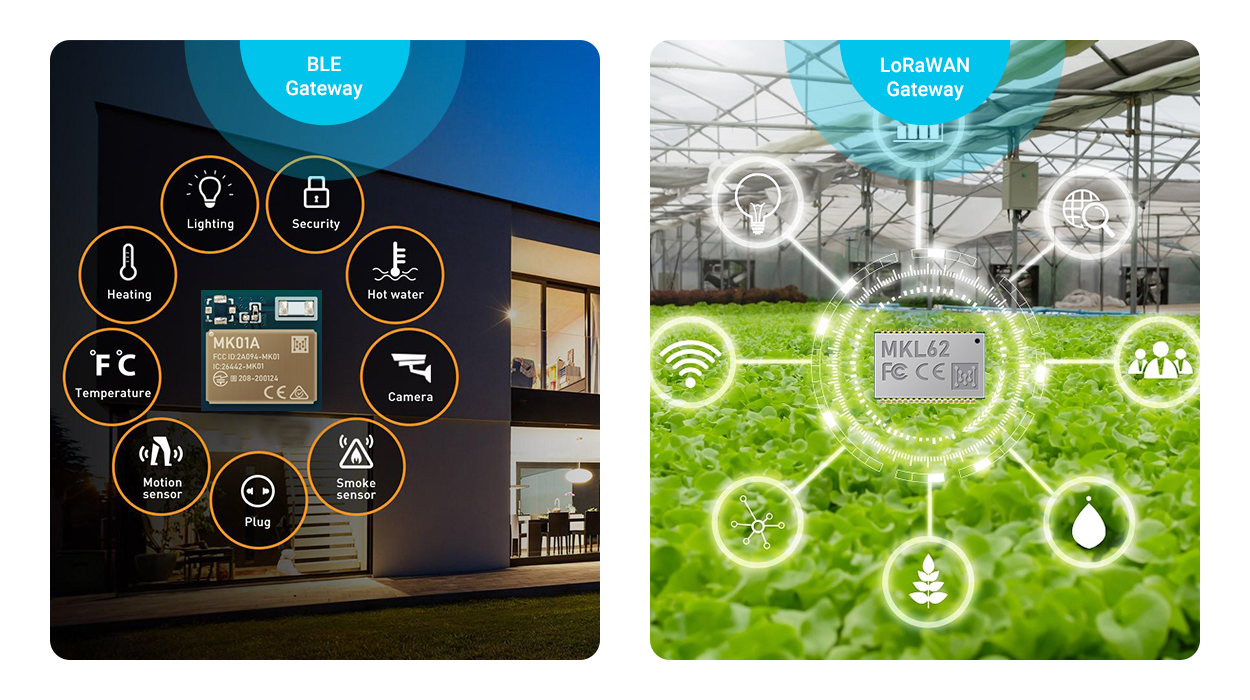
IoT의 발전 기준 치수 과학 기술 시장
모듈 시장의 시스템은 US$ 가치에 도달할 것으로 예상됩니다. 1.15 10억 2023 까지 성장할 것으로 예측됩니다. 미국 달러$ 4.65 ~에 의해 10 억 2033. 시장은 다음과 같은 CAGR을 보일 것으로 예상됩니다. 15% 예측 기간 동안.
과거에, IoT 모듈 기술은 소형화 등의 영역에서 발전해 왔습니다., 전력 효율성, 연결 옵션, 데이터 처리 및 저장, 및 보안. 이러한 발전으로 인해 IoT 모듈이 더 작아졌습니다., 더 전력 효율적, 다양한 무선 연결이 가능합니다.. 또한, 데이터 처리 및 보안 기능 개선으로 IoT 솔루션의 기능성과 신뢰성이 향상되었습니다..
앞을 내다보며, IoT 모듈 기술은 계속 발전할 것으로 예상. 예상되는 발전에는 엣지 컴퓨팅 기능이 포함됩니다., 보다 빠르고 안정적인 연결을 위해 5G 연결을 활용합니다., 온디바이스 처리 및 의사결정을 위한 AI 통합, 보다 정확한 데이터 수집을 위한 향상된 센서 기능, 향상된 보안 및 데이터 무결성을 위한 블록체인 통합, 표준화와 상호운용성을 향한 노력. 이러한 미래의 발전은 IoT 솔루션의 성장과 채택을 촉진할 것입니다., 산업 전반에 걸쳐 혁신적인 애플리케이션을 활성화하고 보다 연결되고 효율적인 IoT 생태계를 육성합니다..
다른 MOKOSmart의 IoT 모듈 유형
IoT 배포도 이동통신사가 제공하는 네트워크 서비스에 따라 달라진다는 점을 잊지 마세요., 그러니 신뢰할 수 있는 제공업체를 선택하세요. MOKOSmart 17년 이상 다양한 종류의 모듈을 생산해 온 회사입니다.. 과학과 사회 발전에 맞춰 최신 기술을 개발하기 위해 노력해 왔습니다., 많은 고객들로부터 호평을 받고 있는. 다음은 판매가 좋은 MOKOSmart의 인기 있는 모듈 유형입니다.:
블루투스 모듈: MOKOSmart는 BLE 모듈 전문 제조업체입니다.. 당사의 모듈 포트폴리오는 강력한 성능을 제공하도록 설계되었습니다., 쉬운 글로벌 인증, 간단한 구현. 블루투스 5.2 의사소통 범위를 확장할 뿐만 아니라, 장치가 더 먼 거리에서 통신할 수 있도록 할 뿐만 아니라 에너지 소비를 최소화하면서 장치가 효율적으로 작동할 수 있도록 하는 에너지 절약 기능도 통합합니다.. 주파수 범위는 다음과 같습니다. 2360 MHz ~ 2500 MHz는 Bluetooth 통신에 상대적으로 간섭이 없는 스펙트럼을 제공합니다.. AES-128은 장치 간에 전송되는 데이터를 암호화하여 안전한 통신을 보장합니다.. 이러한 특성으로 인해 광범위한 응용 분야에 매우 적합합니다., IoT 디바이스를 망라하는, 웨어러블, 오디오 장치, 스마트 홈 자동화 시스템, 의료 기기, 그리고 수많은 다른 도메인.
LoRa 모듈: MOKOSmart는 LoRa 모듈의 선도적인 제조업체 중 하나로 인정받고 있습니다., IoT의 다양한 주요 부문에 걸친 원활한 통합 제공. LoRa 모듈은 IoT 애플리케이션에 매우 적합한 다양한 기능을 제공합니다.. 작은 크기와 손쉬운 개발 및 통합으로 인해, 유연성과 편의성을 제공합니다.. 또한, LoRa 모듈은 최대 10km의 통신 거리를 자랑합니다., 장거리 연결에 적합하게 만듭니다.. 전력 효율성이 뛰어납니다., 최소한의 에너지만 소비, 높은 수신 감도를 나타냅니다., 까다로운 환경에서도 안정적인 데이터 수신 가능. 게다가, LoRa 모듈은 최대 21dBm의 높은 Tx 전력을 제공합니다., 확장된 적용 범위를 위한 강력한 신호 전송 보장.
결론
한마디로, IoT 프로젝트의 성공을 위해서는 안정적인 IoT 무선 모듈을 선택하는 것이 중요합니다.. MOKOSmart의 모듈 유형은 강력한 성능을 제공합니다., 원활한 연결, 광범위한 호환성, 다양한 IoT 애플리케이션에 대한 신뢰할 수 있는 선택이 되었습니다.. 무선 기술을 이해함으로써, 신청 요구 사항 평가, 그리고 핵심 요소를 고려하여, 기업은 충분한 정보를 바탕으로 결정을 내리고 IoT 배포의 원활한 운영을 보장할 수 있습니다.. 신뢰할 수 있는 IoT 모듈을 선택하면 사물 인터넷의 잠재력을 최대한 활용하고 산업 전반에 걸쳐 혁신을 주도할 수 있는 기반이 마련됩니다..
IoT 모듈에 대해 계속 읽으세요
